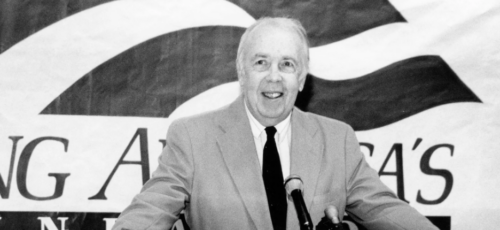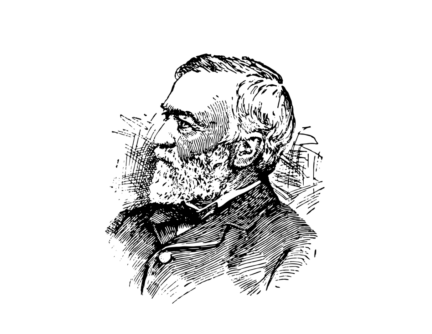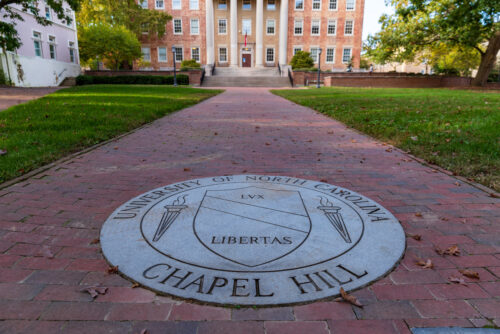It’s a too-familiar theme: conservative parents start foundations and liberal children change the foundation’s giving goals. Is there any way to protect conservative donor intent after they pass away?
One of the perennial problems in philanthropy is when a wealth creator is conservative or libertarian and his children are liberals or leftists. One classic example is that of John D. MacArthur, who was a rock-ribbed conservative who once denounced environmentalists as “little old ladies and bearded jerks” who “just throw rocks in your path.” His son, however, J. Roderick “Rod” MacArthur, was liberal and had profound disagreements with his father.
When John MacArthur died in 1978, the John D. and Catherine T. MacArthur Foundation had a board primarily made up of conservatives—but Rod MacArthur’s endless lawsuits ensured that by the time the younger MacArthur died in 1984, all the conservatives except for commentator Paul Harvey were kicked off the board. The MacArthur Foundation had become a pillar of the liberal philanthropic establishment, which it remains to this day.
I recently discovered another case of intergenerational philanthropic conflict with the case of the Harold Simmons Foundation. You probably haven’t heard of Harold C. Simmons (1931-2013) unless you live in Texas. But during his lifetime, he was a major contributor to 501(c)4’s that backed Republican candidates. In 2004, he was a backer of “Swift Boat Veterans for Truth,” a group that charged that Democratic presidential candidate John Kerry had exaggerated his record in the Vietnam War. Simmons was close enough to President George W. Bush that he recommended the painter who produced Bush’s official presidential portrait. When he died in 2013, the Center for Public Integrity calculated that he gave $31 million to candidates and super PACS, including $23.5 million to American Crossroads.
“I’ve got the money so I’m spending it for the good of the country,” Simmons told the Wall Street Journal in 2013.
Simmons also gave a lesser amount to conservative nonprofits, including the Media Research Center, on whose board Simmons served for 27 years, including some time as chairman.
During his lifetime, Simmons, along with his wife Annette, was a major donor to nonprofits in the Dallas area. The Chronicle of Philanthropy calculated that Simmons donated $200 million to the University of Texas Southwestern Medical Center. When Simmons gave a 20-year, $41 million gift to the Center in 1988, he noted that the money would be used for research on arthritis and cancer, because “I’ve got arthritis and don’t want to get cancer.” In addition, he gave $5 million for windows at the newly constructed Dallas Opera House, and $5 million to a South African school founded by Oprah Winfrey. In 2016, after Harold Simmons’s death, Annette Simmons gave $50 million for the construction of a park along Dallas’s Trinity River, which will be named Simmons Park when it opens
Finally, Monica Langley reported in the Wall Street Journal in 2013 that Simmons “takes day trips every week to visit obscure libraries, churches, and museums around Texas. He arrives unannounced and typically turns over a big check or several hundred-dollar bills.” In addition, Simmons routinely gave panhandlers $50 or $100 bills, saying it was “not my business” if the money was used for alcohol or drugs.
Today, his daughters Lisa K. Simmons and Serena Simmons Connelly control the Harold Simmons Foundation. It primarily gives to education-related nonprofits in Dallas, Planned Parenthood, and groups advocating gun restrictions. In 2019, it funded a poll from Johns Hopkins’s Bloomberg School of Public Health about personalized or “smart” guns that said that 79 percent supported the creation of these types of guns but only 18 percent would buy them if they cost $300 more than a non-personalized gun.
There’s a lot about the Simmons family I don’t know. Simmons was a public figure for 25 years, but he gave remarkably few interviews. I haven’t seen his deed of trust, and I don’t know why he set up the Harold Simmons Foundation in perpetuity or if he imposed any restrictions on how his fortune should be used. Neither Lisa K. Simmons or Serena Simmons Connelly have ever spoken about their differences with their father, save that in 2012 Serena Simmons Connelly said that she had taken her “Obama for President” bumper sticker off of her car for fear of offending her father.
Still, the Harold Simmons Foundation must be counted as an example of mission drift away from the founder’s ideas. Can anything be done to make sure children don’t take away their parents' legacy as donors?
One answer comes from the Jacobs Family Foundation, whose founder, Joseph Jacobs, was a conservative, but whose daughters are more liberal. They agreed at the outset that while Jacobs was alive the family foundation would spend money on causes that father and daughters agreed upon and that the foundation would sunset after the daughters’ deaths. The goal during Joseph Jacobs’s lifetime, Jacobs’s son-in-law, Norman Hapke, told Family Money was “liberal goals with conservative means. It’s not just liberal goals, it’s sensible goals that are an amalgam of what both sides want. We cross the boundary between political labels.”
The Jacobs Family Foundation survives with a board made up of Jacobs’ two surviving daughters, his son-in-law, and two grandchildren. I don’t think most of their grants are for causes Joseph Jacobs would have wanted, but Jacobs and his children clearly thought about what to do and came up with a solution that worked for them.
It’s clear that the Harold Simmons Foundation mostly funds causes that Harold Simmons did not support, and will probably do so in perpetuity. The lesson for donors is clear: make sure the foundation you create has a sunset clause, or at least get excellent leadership in place.







The case of the Simmons mission drift doesn’t get enough attention but is a good reminder that donor intent wasn’t a problem for the long-dead funders of today’s biggest foundations. It continues steadily on. Amen to sunsetting.